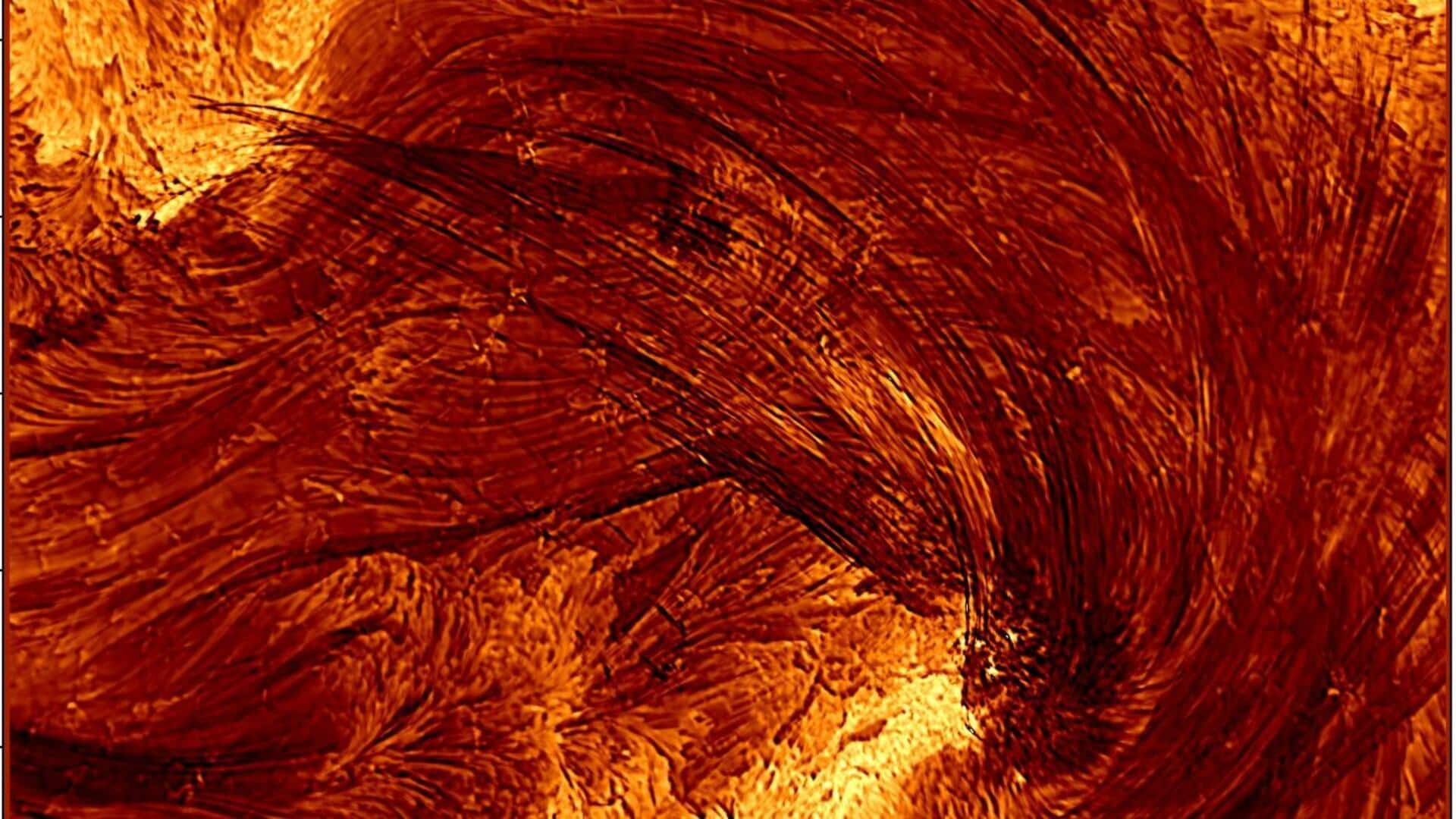
This is the most clear image of solar flare ever
What's the story
The Daniel K. Inouye Solar Telescope (DKIST) has captured the highest-resolution pictures of a solar flare at the H-alpha wavelength (656.28nm). The unprecedented observations were made during the decay phase of an X1.3-class flare on August 8, 2024. The groundbreaking work was led by Cole Tamburri from the National Solar Observatory (NSO) and is published in The Astrophysical Journal Letters.
Telescope features
A look at Inouye Solar Telescope
The Inouye Solar Telescope, operated by the NSO, uses sunlight at the H-alpha wavelength to observe specific solar features. This enables astronomers to see details that can't be seen with other types of solar observations. The telescope's Visible Broadband Imager (VBI) instrument can resolve features as small as 24km across, more than 2.5 times sharper than its closest competitor.
Research findings
Observations inform flare models
The VBI data from the Inouye Solar Telescope revealed ultra-fine coronal structures that could directly inform flare models built with complex radiative-hydrodynamic codes. This discovery is a major advancement in understanding the fundamental scale of solar coronal loops and takes flare modeling to a whole new level. The research team included scientists from NSO, Laboratory for Atmospheric and Space Physics (LASP), and Cooperative Institute for Research in Environmental Sciences (CIRES).
Solar phenomena
Coronal loops and flares
Coronal loops are plasma arches that follow the Sun's magnetic field lines. They often appear before solar flares, which are sudden energy releases tied to some of these magnetic field lines twisting and snapping. This energy release powers solar storms that can affect Earth's critical infrastructure. The Inouye Solar Telescope's observations during an X-class flare were a major milestone in solar science, revealing details not seen before at such scales.